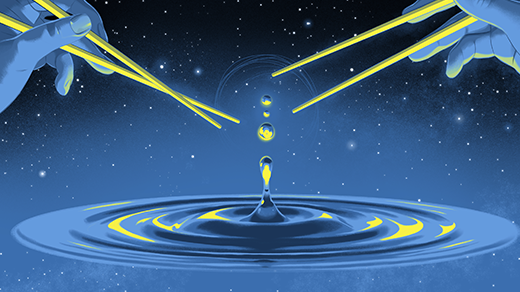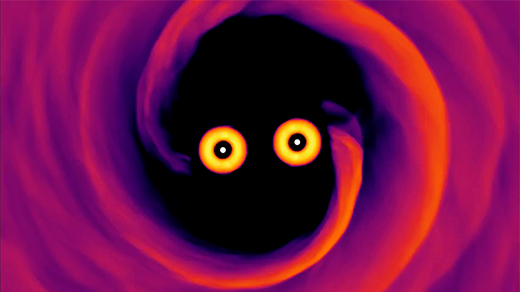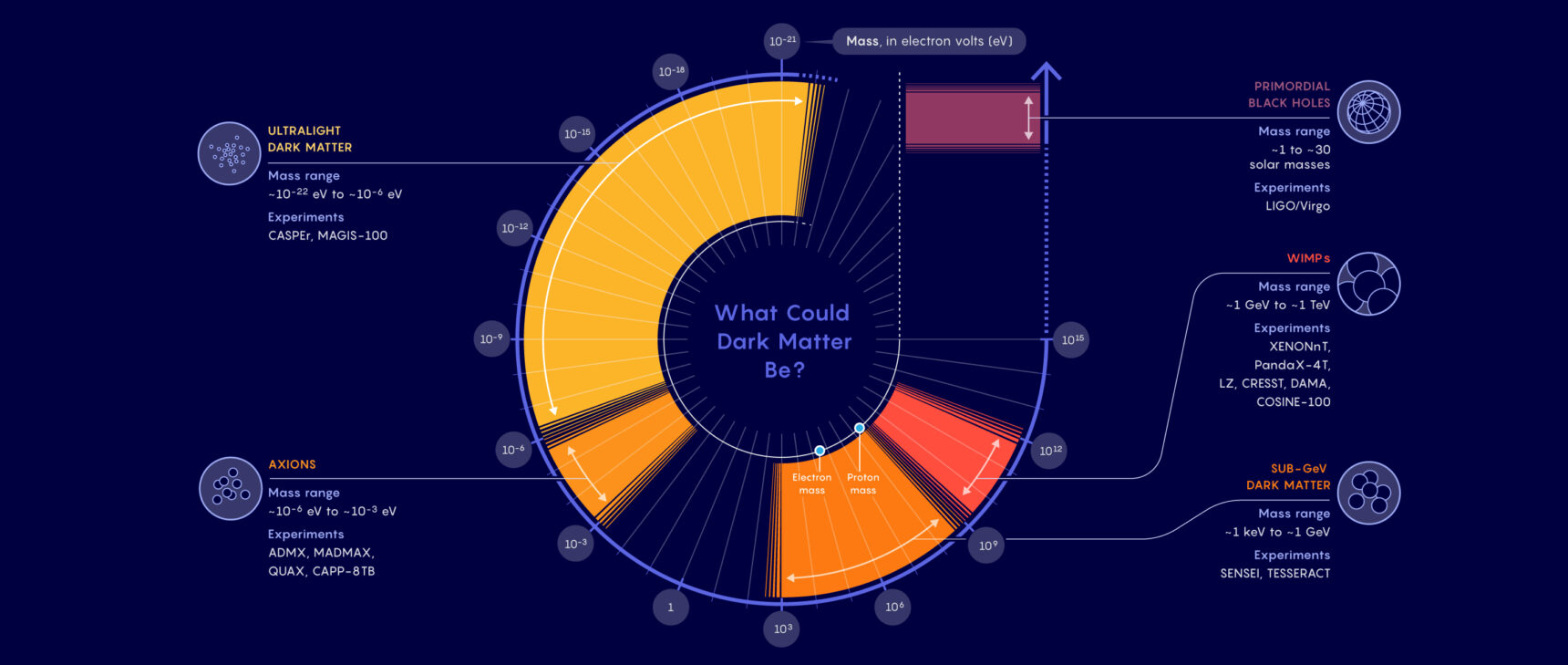Contemplating the End of Physics

James O’Brien for Quanta Magazine
Introduction
Is physics finished? The 21st century is often called the age of biology. Or artificial intelligence. Or any other emerging field. This relegates physics to the previous century — the golden days when the revolutions of relativity and quantum mechanics shook the world, and the discoveries of elementary particles led to a string of Nobel Prizes. Nowadays, people worry about a “desert scenario,” where no new particles will be found for many decades to come, if ever.
I believe this point of view is wrong, in at least three distinct ways. First of all, for a subject supposedly past its prime, the first two decades of this century have been pretty successful for physics. We saw the discovery of the Higgs particle in 2012, the detection of gravitational waves in 2015 (announced in 2016) and the first image of a black hole’s event horizon in 2019. All three were rare instances of scientific mega-events that landed on the front pages of newspapers and captured the imagination of the world.
But, one could argue, the seeds that led to these discoveries were all planted in the good old days. Black holes and gravitational waves are direct consequences of the equations Albert Einstein discovered in 1915. Maybe physics has run out of original ideas?
That brings us to the second argument. Recent advances in cosmology allow us to state, with a fair amount of certainty, that 95 percent of the universe is missing. These missing parts consist of dark matter and dark energy, both equally mysterious forms of new physics. As long as such mysteries remain — and there are others — the work of physics will not be complete. (I might also add that understanding 5 percent of a subject is in itself a wonderful achievement.)
The third reason the reports of the death of physics are greatly exaggerated comes from a more fundamental and categorical mistake: Defining progress in terms of discovering new particles or forces is a myopic view of physics. It ignores a large part of the discipline, and vastly underestimates what we can still achieve. In fact, I believe that what we currently know is an absolutely negligible fraction of the physics that’s out there, waiting to be investigated.
The aim of physics is to understand in a precise, mathematical way all manifestation of matter and energy in the universe — and we have barely started to explore this infinitude of possibilities. Claiming that physics is finished is akin to arguing that mathematics ended after the introduction of natural numbers and basic arithmetic, or that chemistry was over with the advent of the periodic table. Learning the rules of chess doesn’t make you a grandmaster.
The truth is, the realm of the smallest particles is not the only place you can find the fundamental laws of physics. They can also “emerge” out of the collective behavior of many constituents. A simple example is sound waves, the synchronized oscillations of molecules of matter. By using the rules of quantum theory, these waves themselves can be described in terms of particles. These “phonons” are elementary packets, or “quanta,” of sound, and their behavior is similar to that of photons, the quanta of light. So, like the fictional Baron Munchausen who lifted himself out of a swamp by pulling on his own hair, physics is self-sustaining — it can use itself to produce new fundamental insights, which can then be captured in rigorous mathematics.
Confronted with the endless number of physical systems we could fabricate out of the currently known fundamental pieces of the universe, I begin to imagine an upside-down view of physics. Instead of studying a natural phenomenon, and subsequently discovering a law of nature, one could first design a new law and then reverse engineer a system that actually displays the phenomena described by the law. For example, physics has moved far beyond the simple phases of matter of high school courses — solid, liquid, gas. Many potential “exotic” phases, made possible by the bizarre consequences of quantum mechanics, have been cataloged in theoretical explorations, and we can now start realizing these possibilities in the lab with specially designed materials.
All of this is part of a much larger shift in the very scope of science, from studying what is to what could be. In the 20th century, scientists sought out the building blocks of reality: the molecules, atoms and elementary particles out of which all matter is made; the cells, proteins and genes that make life possible; the bits, algorithms and networks that form the foundation of information and intelligence, both human and artificial. This century, instead, we will begin to explore all there is to be made with these building blocks.
For even with 14 billion years of an expanding universe and almost 4 billion years of life on Earth, nature has explored only the tiniest fraction of all of the possible designs. As the biologist Richard Dawkins likes to point out, we human beings — along with every other organism that has ever lived — are all the lucky winners of a cosmic lottery. From a mind-boggling number of possible genetic blueprints, our codes were chosen by chance to be realized as a living prototype. The same goes for all forms of matter around us. The natural processes on Earth and in the universe have produced only a small sample of the full menu of molecules and forms of matter, and consequently of the corresponding laws of physics they will have to obey.
But all of this is now changing. Nature’s agonizingly slow process of discovery, driven by cosmological and biological evolution on time scales of millions and billions of years, is accelerated to breakneck speeds in the laboratory. Such work might feel, at first, like “artificial” science. But a genetically designed bacterium is in no way less real, or less worthy of study, than one found in the wild. Nor are the novel one- and two-dimensional materials that display the curiosities of quantum theory. Rather, such new technologies effectively “liberate” quantum mechanics from the confines of atoms and molecules and bring it to the macroscopic scales of everyday life. At some point, we will be able to order every item on the menu of reality.
Science concerns all phenomena, including the ones created in our laboratories and in our heads. Once we are fully aware of this grander scope, a different image of the research enterprise emerges. Now, finally, the ship of science is leaving the safe inland waterways carved by nature, and is heading for the open ocean, exploring a brave new world with “artificial” materials, organisms, brains and perhaps even a better version of ourselves.
So my optimistic outlook for physics is equally true for all other branches of science: The adventure has only just begun.



